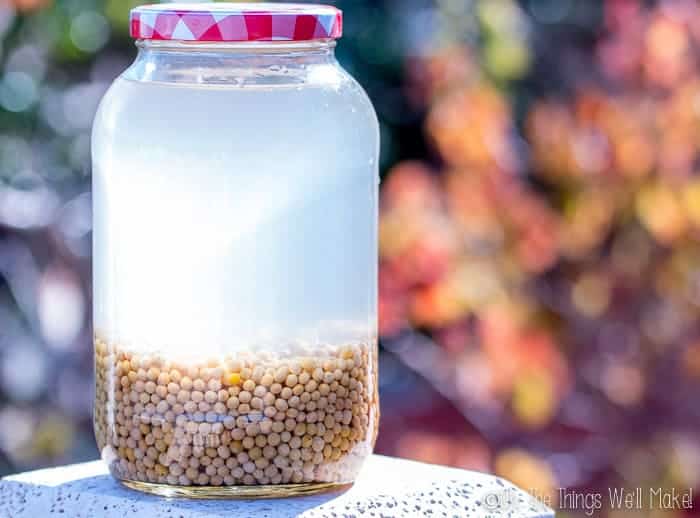2000 years ago, in the kitchens of ancient China, a transformative condiment was born—shoyu, the salty, umami-rich sauce that would become an indispensable element of Japanese cuisine. Its journey across centuries and continents has left an enduring legacy, enriching countless dishes with its distinctive flavor profile.

Image: whiskitrealgud.com
At its core, shoyu is an alchemy of four simple ingredients: soybeans, wheat, water, and koji (a mold used in fermentation). Yet, within this seemingly modest composition lies a symphony of complex flavors and aromas, a testament to the meticulous craftsmanship that goes into its creation.
Step into the Shoyu-Making Atelier
To witness the magic of shoyu production firsthand, let us venture into the heart of a traditional shoyu-making atelier. Here, time seems to stand still as skilled artisans carry out techniques passed down through generations.
The process unfolds in a series of unhurried steps:
-
Soybean Selection and Preparation: The finest soybeans are meticulously selected, washed, and soaked overnight to soften them.
-
Wheat Roasting: Wheat is gently roasted to impart a nutty flavor and enhance the koji’s fermentation capabilities.
-
Koji Inoculation: The roasted wheat is combined with koji spores, triggering a controlled fermentation process that breaks down the starches and proteins into simple sugars and amino acids.
-
Moromi Mash: The koji-inoculated wheat is mixed with cooked soybeans, water, and a small amount of salt to create the moromi mash. This is the foundation of the shoyu’s flavor and aroma.
-
Fermentation Magic: For months, the moromi mash undergoes a controlled fermentation process in wooden vats or stainless-steel tanks. During this time, microorganisms work their transformative magic, creating the complex symphony of flavors and aromas that define shoyu.
-
Pressing: Once fermentation is complete, the moromi mash is pressed to separate the liquid from the solids. This precious liquid is the raw shoyu.
-
Aging and Maturation: The raw shoyu is then aged in wooden barrels for several months to years. This aging process mellows the flavors, adds depth and complexity, and develops the characteristic amber hue of shoyu.
Expert Insights: The Essence of Shoyu
“The secret to great shoyu lies in the balance of flavors achieved through careful fermentation,” says Master Brewer Izumiya Keiichi of the renowned Kikkoman company. “It’s a harmony of sweetness, saltiness, acidity, and umami that elevates any dish.”
Chefs around the world echo this sentiment, praising shoyu’s versatility and ability to enhance the natural flavors of food. “Whether used as a dipping sauce, marinade, or seasoning, shoyu adds a layer of complexity that is simply unmatched,” adds chef Daniel Boulud of the three-Michelin-starred Daniel in New York City.
Actionable Tips for Shoyu Connoisseurs
-
Choose wisely: Look for shoyu that is naturally brewed, contains no added sugars or preservatives, and is aged for an optimal balance of flavors.
-
Store it right: Shoyu should be stored in a cool, dark place to preserve its freshness and flavor.
-
Use it creatively: Explore the versatility of shoyu beyond soy sauce. Use it as a marinade for meats and vegetables, a dressing for salads, or a dipping sauce for sashimi and sushi.
-
Experiment with different types: There are many regional variations of shoyu, each with its own distinct flavor profile. Try them out to discover your favorites.

Image: thethingswellmake.com
How To Make Shoyu Sauce
Conclusion
Shoyu is not merely a condiment; it is a culinary masterpiece, a testament to the enduring artistry of traditional food-making. Its journey from the ancient kitchens of China to the modern tables of the world is a testament to its enduring appeal and the transformative power of fermentation. Whether dipping sushi, marinating grilled salmon, or simply savoring it as a dipping sauce, shoyu adds a touch of umami-rich magic that elevates the ordinary into the extraordinary.







